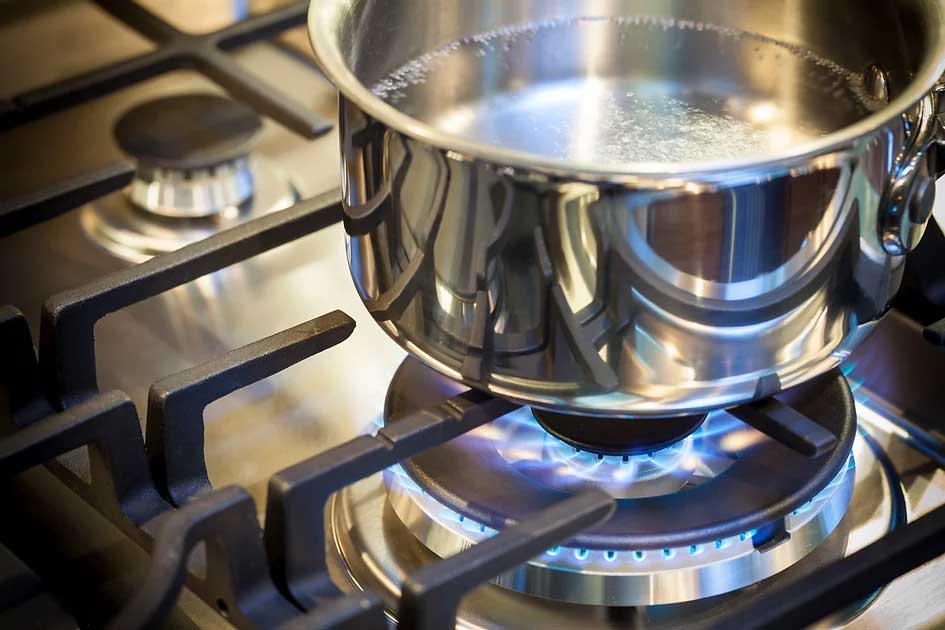
When you were dreaming about owning, being a part, or becoming the chef of a restaurant, your visions were probably not filled with grand ideas of how you would revolutionize water efficiency.
In fact, water most likely didn’t have any place in your visions except perhaps where pasta was concerned.
Unfortunately, as you now know, the reality is that hot water and the cost associated with its procurement consume more of your attention than you had imagined that it would.
So much more goes into the hot water in your establishment than merely turning the faucet or firing up the dish machine.
To address issues regarding food safety and regulations, whether you are dealing with new construction or a retrofit of a currently running operation, you should be engaging efficiency consultants with a holistic approach to energy conservation, efficiency, and, therefore, maximized profitability.
Hot Water in The Food Service Sector
First and foremost, in food service operations, hot water is needed for food safety.
Businesses in the food service sector are not allowed to operate without a hot water supply that can meet the demand during peak operation. Clean hands, utensils, and dishes are required to run a safe kitchen.
For this, we need unlimited and immediate access to hot water.
Moreover, what we want is reliability and efficiency, as well as, little investment and operational expense.
That is not too much to ask, is it?
Perhaps it is if your systems and equipment are not running as efficiently as possible or meeting the demands of your business and current regulatory codes.
To ensure that your new construction, or upgrades to your current systems, will meet your needs and satisfy regulations you and your designers and consultant should be considering the following four steps presented in this Water Heating Design Guide:
-
Reducing hot water use of equipment while maintaining performance
-
Increasing the efficiency of water heaters and distribution systems
-
Improving hot water delivery performance to hand washing sinks
-
Incorporating “free-heating” technologies like waste heat recovery and solar pre-heating
The Basics: As an Owner/Operator, What Do I Need to Know?
We get it. Designing or retrofitting restaurant operations is complicated enough without trying to absorb the minute details of the engineering behind hot water systems.
However, there are some things that you should know that will help you understand how the systems work and make decisions that will promote maximum efficiency.
The hot water system in your establishment is composed of three fundamental parts: water heater and storage, distribution pipes, and the point-of-use equipment and faucets that draw upon the hot water.
“Free heating” technologies that capture waste heat, or solar energy, are currently being developed and analyzed and might be something that you can consider in the future.
For now, we will concentrate on the energy efficient equipment that is readily available and being used with proven success.
The majority of foodservice operations use a water heater with a tank that holds water at the desired temperature, typically 120°F and 140°F for equipment, and slightly lower for hand sinks.
Distribution pipes are a series of insulated pipes that carry the water from the water heater tank to equipment and faucets. Insulation of these pipes is necessary to maintain temperature and reduce heat waste, therefore maintaining efficiency and saving money.
You’re probably well aware of the point-of-use equipment that is drawing from your hot water supply: faucets, sprayers, dishwashers, and mop sinks. These are the parts of the overall hot water system that you will encounter on a daily basis.
Equipment and fixtures that offer equal performance and energy efficiency are available, in some cases regulated, and can mean long-run savings for your business.
Pre-rinse Spray Valves
Federal Regulations – Energy Policy Act of 2005: Pre-Rinse Spray Valves
Commercial pre-rinse spray valves manufactured on or after January 1, 2006, shall have a flow rate of not more than 1.6 gallons per minute.
The most cost-effective piece of equipment that you will have in your kitchen is the low-flow pre-rinse spray valve in your dish pit.
Your pre-rinse sprayer may see upwards of three hours of operation per day. Using the most efficient sprayer available, a 0.64 gpm (gallon per minute) sprayer, over the federally mandated 1.6 gpm sprayer, with three hours of daily use you could save your restaurant more than $900 per year.
Figure 3 in the Water Heating Design Guide shows a comparison of spray valves and corresponding utility costs associated with one hour of use.
Aerators
Inexpensive aerators that are added to the water spout on kitchen handwashing sinks and restroom sinks reduce the water flow without affecting efficacy.
Federal regulation requires a 2.2 gpm aerator for private bathrooms. Although, high-performance aerators are available with flow rates as low as 0.375 gpm.
Figure 4 in the guide shows a comparison of aerators and corresponding utility costs associated.
Dishwashers
Depending upon business volume, style of service, and operating hours, dishwasher needs vary significantly between establishments.
Costs associated with the use of a commercial dish machine go beyond heating of hot water and include cleaning chemicals, electric/natural gas use, and labor.
You need to understand this piece of equipment in terms of usage (racks per hour) if you want to make the most cost-saving decision for your business. Table 2 shows a comparison of hot water use (gal. per rack) of common dishwasher models.
GWT2Energy Helps Clients with Hot Water Savings
So, there you have it, the basics. More in-depth explanation of hot water systems can be found in the Water Heating Design Guide.
However, if you would rather get to the business of making your customers happy, you can rely on our team of energy-efficiency pros to get your systems working on saving you money.
Contact us at GWT2Energy today. We will help you discover the equipment and monitoring that will maximize the efficiency and minimize the costs associated with your hot water systems as well as other energy-related expenses.



